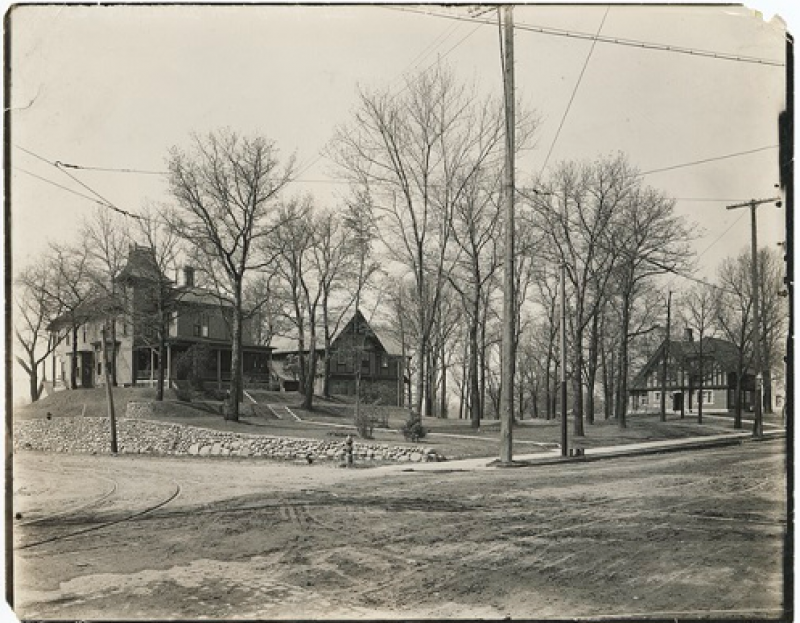
Have you ever driven past the intersection of Glenwood and Penn Avenues and wondered about those older buildings on the SW corner?
Those buildings were the Maternity Hospital, later known as the Ripley Memorial Hospital, which was founded by Martha George Rogers Ripley.
Martha Rogers was born in Lowell, Vermont 1843. She married William Ripley, together they moved to Massachusetts. While there, she worked in the textile milling industry and began a suffrage group in Middleton, MA. She would eventually be elected to the executive committee of the Massachusetts Women Suffrage Association. She enrolled in the medical school at Boston University and received her medical doctorate in 1883. When her husband was involved in a milling accident that same year and could no longer work, Martha became the family’s sole support and moved them to Minneapolis, where she thought there were more opportunities. Martha Ripley was one of the first women to receive a medical license in Minnesota. Also in 1883, she was elected president of the Minnesota Woman Suffrage Association. During her time as president, she worked on public health issues such as clean water, food availability for all, and proper city sanitation, and also on women’s right to vote and to raise the age of consent from 10 years old to 18. In 1891, the state raised the age of consent to 14.
In 1886 Dr. Martha Ripley opened her own maternity hospital for pregnant women and also for children at 316 E. 15th St. Later moving to 609 Bassett Place and then to 2529 4th Ave S, those locations also proved to be too small. In 1896, a house and five acres of land were purchased on the corner of Penn Ave N and Western Ave (now Glenwood Ave) from A.T. Ankeny. Originally, the hospital operated out of the Ankeny home. In 1909 the Marshall Stacy Nursery was added, which was a residence for unwed mothers and their babies. In 1910 the Babies’ Bungalow, which housed sick infants, was completed. The Emily Paddock Cottage was built the following year, providing a home for the hospital’s nurses. Martha Ripley started working on getting a new hospital built to replace the old Ankeny family home. She passed away in 1912, and she was cremated per her request. When her vision and wish for a new hospital was being realized, her ashes were put in the cornerstone. The new Ripley Memorial Hospital opened in 1916.
Martha Ripley employed an all-women staff and gave care to any woman, regardless of their marital and financial status. There was also room for unwed mothers and abandoned children to live and get back on their feet. The hospital operated until 1957, and during its time, it had one of the best infant mortality rates in the United States. Their maternal death rate was much lower than that of the state of Minnesota. In 1939, a bronze plaque depicting Dr. Martha G. Ripley was installed in the Minnesota State Capitol rotunda to honor her.
Many Northsiders were born at the Maternity Hospital over the years it was in operation. Any time it is mentioned on one of the Northside FaceBook pages, a lot of memories and stories come out. One of the kids born there was my younger brother who was born on December 23,1954 when I was almost four. We lived just a little over a block away and I remember walking there with my dad and older brother to see my mom and new brother. However, I was more interested in the rocking horse they had at the hospital since I had never seen one before! A few years later in 1957, the hospital closed. It became the Queen Care Nursing Home which operated there until 2000. I used to tease my younger brother that we could just send him back where he came from.
The hospital was included in the National Register of Historic Places in 1980. While the Marshall Stacy Nursery was demolished in 1965, the Babies’ Bungalow, Emily Paddock Cottage and the 1916 hospital building are still standing. In 2007, a non-profit organization, Aeon, transformed the historic structures into an affordable housing complex called Ripley Gardens. You can walk the grounds, go the Ripley Gardens and see displays about the history as well as the sustainable gardens.


